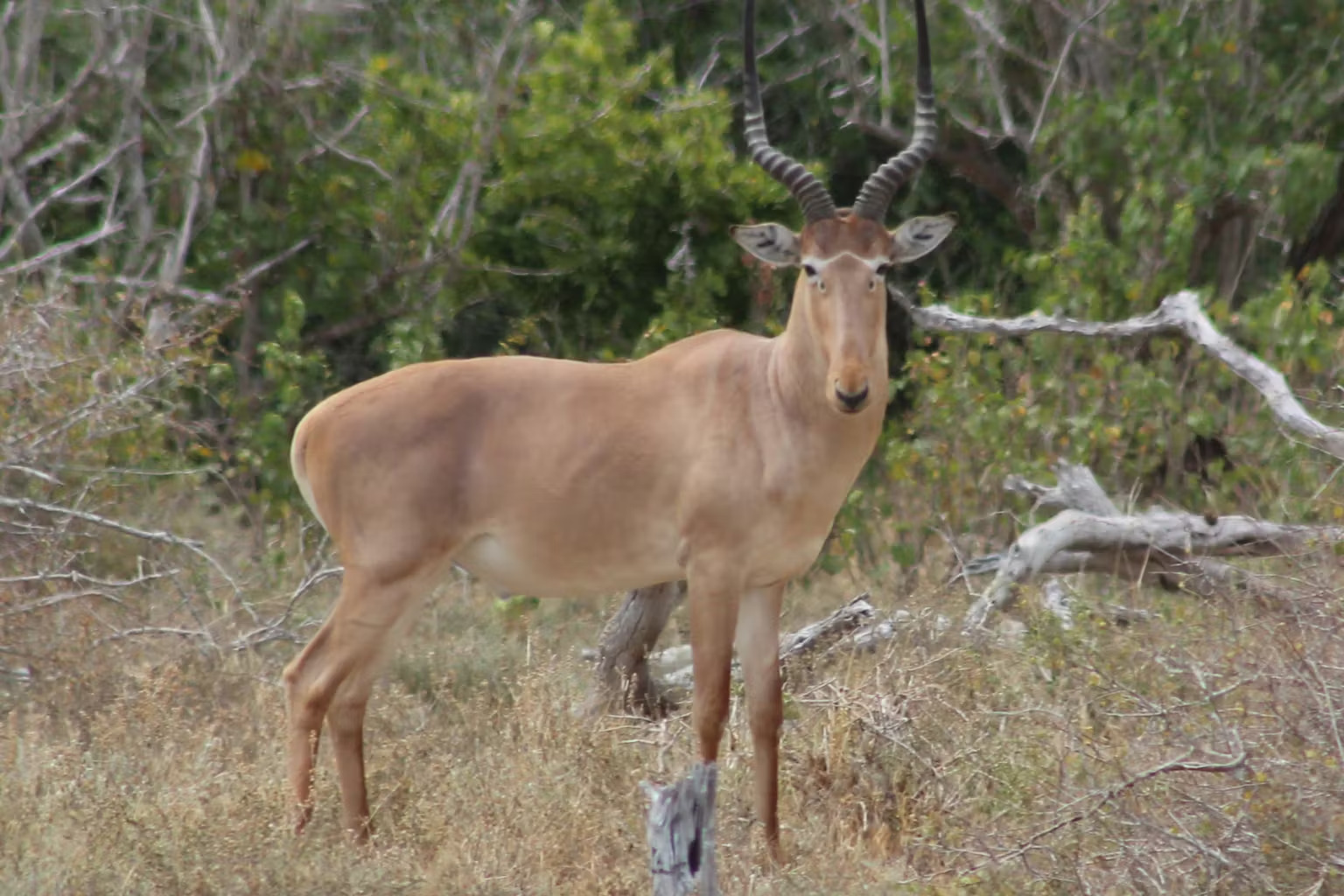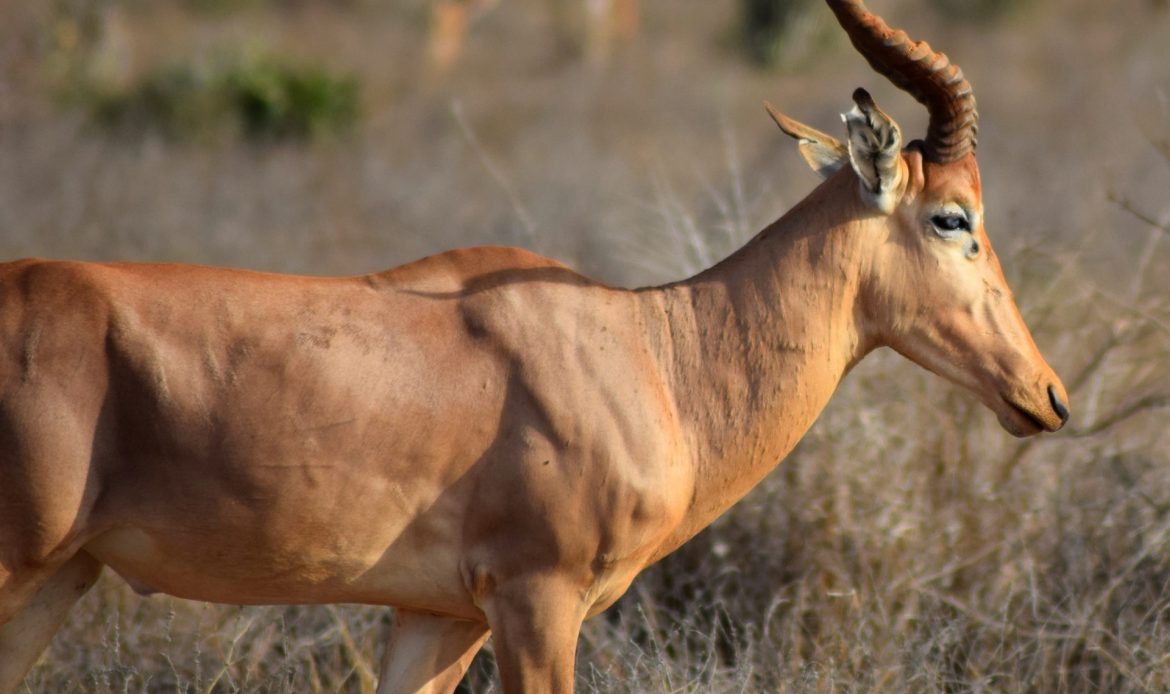
Endangered Species on the Brink — The Hirola Antelope’s Fight for Survival
The faster decline of the world’s endangered species is something any observer can write about, but not many share the Hirola Antelope’s story. Known as the “ghost of the grasslands,” this elegant species once traversed the grasslands of Kenya and Somalia with ease. They are now down to only a few hundred. The Hirola’s extinction is not just the loss of a single species — it is, instead, a harbinger of how fragile our ecosystems have become.
Every time a species is gone, it weakens an entire web of life. For this reason, wildlife conservation is not just about saving animals; it is about saving a balanced ecosystem that sustains life on this planet. The story of the Hirola Antelope is meant to remind us that all of our acts of kindness to help save wildlife do count.
Table of Contents
The Tragic Decline of the Hirola Antelope
The Hirola (Beatragus Hunteri) is considered by many to be one of the endangered species in the world, as there are fewer than 500 remaining in the wild. Habitat loss due to agriculture, overgrazing by livestock, and persistent drought have pushed this unique antelope to the brink of extinction.
In a matter of decades, Hirolas went from thousands of antelopes occupying the grassy savannas along the Kenya-Somalia border in the 1970s to senselessly low numbers due to a combination of environmental changes, land use changes, and human interference. When they converted grasslands to farmland or began poaching Hirolas, their critically endangered numbers dropped nearly 90%.
Insinuating that today conservationists refer to the Hirola as a “living relic” is an understatement for the last and only one left of its genus. To lose the Hirola means we lose a whole evolutionary lineage and this makes its rescue not only urgent but essential for animal extinction awareness worldwide.
Why the Hirola Matters
The Hirola is not simply another endangered species; rather it represents an ecological protector. The rite of grazing, the Hirola is selective in what it consumes and in doing so they help to maintain the delicate balance of grassland ecosystems, prevent bush encroachment and, more importantly preserve the sustenance of other animals that also share this ecosystem.
In places where this animal has been extirpated, we noted that where the Hirola has been removed, vegetation becomes overwhelming with no top-grazing effect, and biodiversity again decreases. Hence, the protection of one animal is in fact the protection of an entire habitat. Wildlife conservation efforts to protect wildlife like the Hirola are underway; as animals are protected and preserved, so will the entire ecosystem stabilize; ultimately, this strengthens and protects the natural resilience of our planet.
Kenya’s Silent Conservation Battle
On the eastern border of Kenya, the Ishaqbini Hirola Conservancy has emerged as a beacon of hope for local communities. Established by local communities, the conservancy is at the epicentre of wildlife conservation for the Hirola Antelope. To establish safe breeding grounds, local rangers and conservationists have fenced in thousands of acres.
It’s not just about saving one animal, but about enabling communities to help save wildlife through sustainable coexistence. The Hirola Conservation Program (HCP) collaborates with herders and families to foster a sense of value in protecting what remains. Locals who once hunted for a living now earn a living as wildlife guardians — demonstrating that people and animals can share a future.
Facing the Threats: Climate Change and Poaching
For endangered species like the Hirola, survival is always a struggle. Climate change has exacerbated drought, leading to food and water shortages. The human footprint continues to expand and block essential migration routes. Poaching persists as a latent yet deadly threat, with Hirolas often catching snares intended for other species.
However, there is hope. Thanks to the support for community-led programs and wildlife conservation organizations, there are now more antipoaching patrols and local awareness campaigns that have deterred hunting in the local communities. Nevertheless, the Hirola remains critically endangered and serves as a reminder that we need to protect wildlife resources before it is too late.
Science and Hope: Breeding Programs Making a Difference
In Kenya and internationally, scientific teams are in a race to save the Hirola, employing both genetics-based breeding and habitat restoration. We have observed a minor population increase in the Ishaqbini sanctuary, attributed to dedicated rangers and monitoring programs.
Satellite tracking is being utilized to understand migration patterns, and controlled grazing is helping to maintain healthy ecosystems. These new forms of wildlife conservation provide hope not only for the Hirola but also for other endangered species within the same habitat.
The true win is in the burgeoning networks of organizations increasing animal extinction awareness. Awareness is growing through social media, documentaries, and educational programs. We are changing the narrative for the Hirola from near extinction to a symbol of survival or evidence that targeted human action prevents extinction.

Local Communities: The Unsung Heroes
One of the strongest drives to support Hirola survival is local commitment. The Arawale and Ishaqbini communities are redefining how to help save wildlife in a unique way. They have incorporated conservation into their lives and made it a reality.
They manage patrol units, report poachers, and even conduct guided trips using the proceeds to fund the conservancy. The engagement by local communities reflects the true potential of wildlife conservation; once they see value in protecting animals that reside on the land, they take a risk to protect them. The Hirola is no longer a species; it is part of the identity of the people.
The Global Role in Protecting the Hirola
The challenge that the Hirola faces is not only a Kenyan responsibility. As global citizens, we all have a part to play in protecting wildlife. Donations to a conservation organization, volunteering, or animal extinction awareness can all contribute to wildlife research and wildlife-saving efforts.
Organizations like the Hirola Conservation Program, the Northern Rangelands Trust, and Save the Elephants collaborate to build a safety net for multiple endangered species, proving that teamwork is key to lasting change. Every shared post, article, or contribution adds to the momentum to help save wildlife around the world.
What Can We Do Right Now?
Small actions can cause ripples. Supporting community conservancies, not purchasing resources that destroy habitats and supporting wildlife conservation policies all help protect the most vulnerable animals in our world. When people become educated, they become caring—and when they become caring, they become acting. That’s how we will not only save the Hirola but also innumerable other endangered species fighting to live.
All of us can be part of the movement to help save wildlife—not just by being observers, but through sustainable living decisions every day. The Hirola’s survival story still has a bit of writing left to it, and we can give it a hopeful conclusion.
FAQ Section
1. Why is the Hirola Antelope regarded as an endangered species?
Because lesser than 500 still exist in the wild due to problems such as habitat destruction, drought, and poaching. Their population has decreased by more than 90% in the last few decades.
2. Where can the Hirola Antelope be found today?
In eastern Kenya’s grasslands, predominantly in community-managed areas like the Ishaqbini Hirola Conservancy.
3. How are conservationists working to help save wildlife like the Hirola?
Via breeding programs, protected sanctuaries, anti-poaching patrols, and steeping communities in awareness that fosters coexistence between humans and wildlife.
4. What can individuals contribute to protect wildlife such as the Hirola?
Support conservation groups like the Ishaqbini Hirola Conservancy; reduce products associated with habitat destruction; and raise animal extinction awareness and threats, both online and offline.
5. Why is the Hirola important to wildlife conservation issues?
It represents an entire evolutionary branch amongst antelopes. Saving it will enhance biodiversity and the value of conservation globally.
Last Words of Encouragement
The plight of the Hirola Antelope shows that endangered species don’t simply go extinct overnight — they slip into extinction when the world stops caring. Awareness creates action, and action creates life.
If we are willing to help save wildlife and willing to make a stand and protect wildlife, we can rewrite the narrative for species like the Hirola. Every small act of caring, of sharing knowledge, and of donating helps to strengthen the chain of hope for the endangered species.
This is not only the Hirola’s fight for survival — it is our fight for survival, too.
